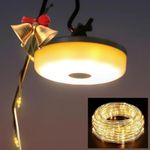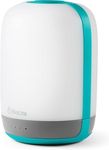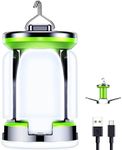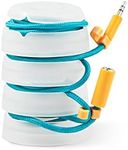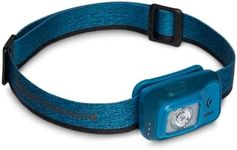Buying Guide for the Best Camping Lights
Choosing the right camping light can make a significant difference in your outdoor experience. Whether you're setting up a tent, cooking dinner, or simply enjoying the night, the right light can provide the necessary illumination and enhance your safety and comfort. When selecting a camping light, consider the following key specifications to ensure you pick the best fit for your needs.Brightness (Lumens)Brightness, measured in lumens, indicates how much light the camping light emits. This is important because it determines how well you can see in the dark. Lower lumens (up to 100) are suitable for close-up tasks like reading or inside a tent. Medium lumens (100-300) are good for general campsite use. Higher lumens (300+) are ideal for wide-area illumination or for larger groups. Choose the brightness level based on the size of your camping area and the activities you plan to do.
Battery LifeBattery life indicates how long the camping light will last on a single charge or set of batteries. This is crucial for ensuring you have light throughout your trip. Short battery life (up to 10 hours) is fine for short trips or if you have access to recharging options. Medium battery life (10-50 hours) is suitable for weekend trips. Long battery life (50+ hours) is ideal for extended trips or if you won't have access to power sources. Consider the duration of your camping trip and how often you can recharge or replace batteries.
Power SourceThe power source of a camping light can vary, including disposable batteries, rechargeable batteries, or solar power. This is important for convenience and sustainability. Disposable batteries are easy to replace but can be costly and less eco-friendly. Rechargeable batteries are cost-effective and environmentally friendly but require access to a power source. Solar-powered lights are sustainable and great for long trips but depend on sunlight availability. Choose based on your access to power and environmental preferences.
Weight and PortabilityWeight and portability refer to how easy it is to carry and transport the camping light. This is important for backpackers or those with limited space. Lightweight and compact lights (under 1 pound) are ideal for backpacking and minimalistic camping. Medium-weight lights (1-2 pounds) offer a balance between portability and brightness. Heavier lights (over 2 pounds) are suitable for car camping where weight is less of an issue. Consider how much you are willing to carry and the type of camping you will be doing.
Durability and Weather ResistanceDurability and weather resistance indicate how well the camping light can withstand outdoor conditions. This is important for ensuring the light can handle rough use and various weather conditions. Basic durability is fine for fair-weather camping. Water-resistant lights can handle light rain and splashes. Waterproof and rugged lights are ideal for harsh weather and rough handling. Choose based on the expected weather conditions and how tough you need the light to be.
Light ModesLight modes refer to the different settings a camping light can offer, such as high, low, strobe, or red light. This is important for versatility and energy efficiency. Basic lights with one or two modes are sufficient for simple needs. Multiple modes offer flexibility for different tasks and can help conserve battery life. Red light mode is useful for preserving night vision. Choose based on the variety of activities you plan to do and your need for conserving battery life.


